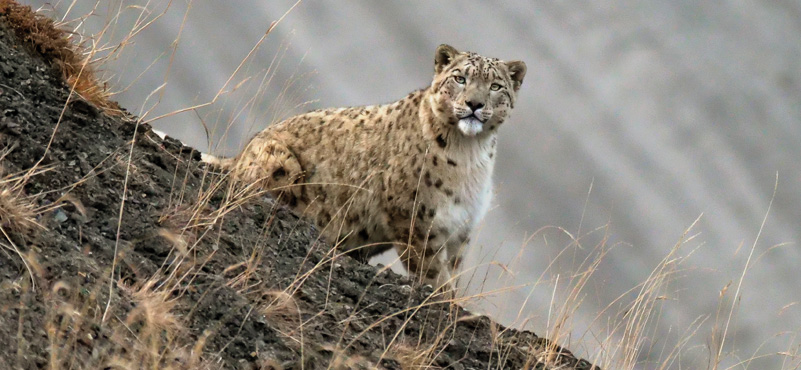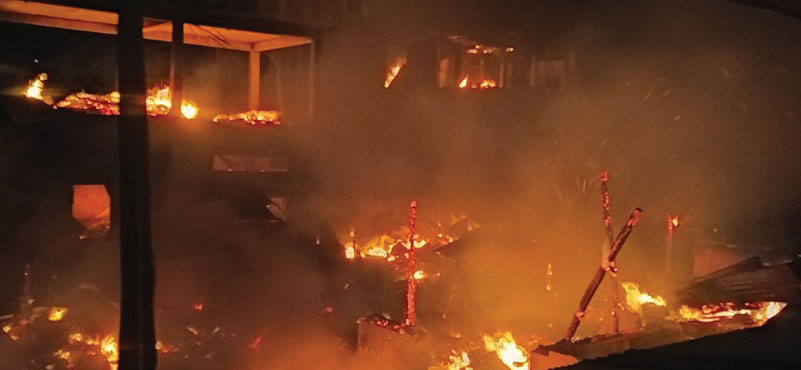Over the last four decades, Naresh and Rajesh Bedi have used their talents and energies to capture the beauty and mystery of India’s wildlife through their documentaries and photographs. Their films are entertaining, educative and always carry a strong conservation message. They have been fortunate to witness and record rarely-seen behaviour, contributing to the scientific understanding of India’s natural history. Their exceptional achievements have been rewarded with national and international recognition.
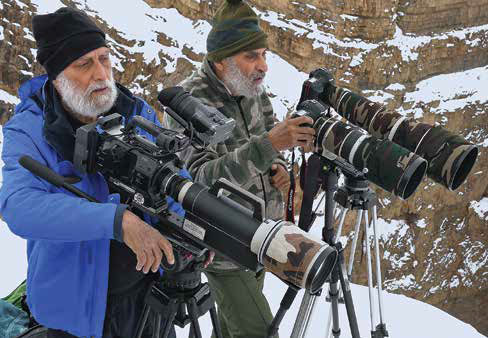
Although pioneers in the field of wildlife filmmaking, in their career of 5 decades, you would have never seen them blowing their own trumpet. They have always believed in speaking through their work and creating masterpieces; their numerous national and international awards are a testament to that. The extent of their skill, know-how, and unwavering grit, dedication, and passion towards their work and craft remains an inspiration to all, especially the younger lot interested in conservation, environment and animal life.
Recently they have worked upon a film on the snow leopard, which was screened to a small group of friends and admirers. Some excellent coverage of this rarely sightly animal, gripping narrative stretching over a few years of filming, highlight this elusive cat, another example of the skills of the two brothers.
The beauty, elusive nature, and rarity of snow leopards make them a subject of fascination and intrigue. Their world population is thought to be dwindling every year – but nobody knows for sure – estimates range between 4,000 and 6,500 individuals.
Snow leopards prowl the most inaccessible heights of central Asia’s mountains. In India, they inhabit the Trans-Himalayan region – a high-altitude desert whose rugged topography, scant vegetation and fiercely cold winters make survival a severe challenge for both wildlife and people. Popularly known as the ‘grey ghost of the mountains’, the snow leopard is the most secretive and least understood of all the great cats. So thin on the ground and so elusive, they can be extremely hard to find, let alone film.
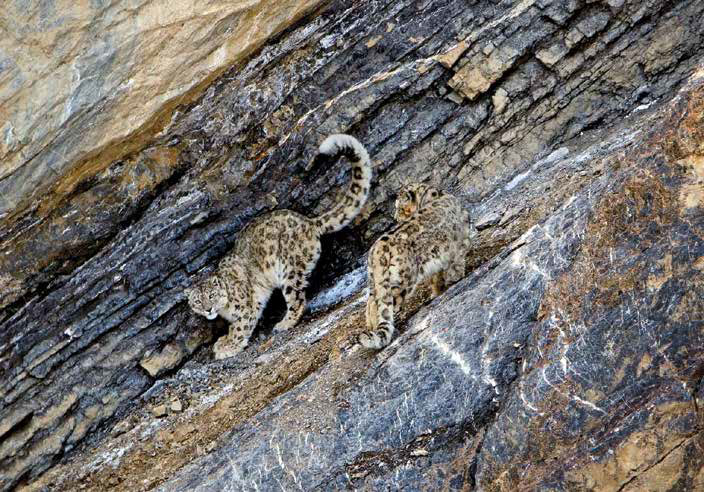
Here, is the synopsis of the film:
For many years, making a film about snow leopards in the wild was considered quite impossible. Tantalising glimpses of their secretive lives have been revealed in recent years, but no complete story that follows their intimate life.
Now in their youthful seventies, Naresh and Rajesh Bedi decided to take on the challenge.
 So, the first question was funding. But what broadcaster would back two septuagenarians on a mad quest to film one of the most elusive animals in one of the most physically demanding environments? Cost was a huge deterrent but not for them. Given their passion, they were determined to ‘do’ it; they took the call to fund the entire enterprise themselves.
So, the first question was funding. But what broadcaster would back two septuagenarians on a mad quest to film one of the most elusive animals in one of the most physically demanding environments? Cost was a huge deterrent but not for them. Given their passion, they were determined to ‘do’ it; they took the call to fund the entire enterprise themselves.
Twenty-five years ago, the Bedi Brothers presented the first rare glimpses of snow leopards to the world, filmed in Ladakh. Choosing the Spiti Valley in the state of Himachal Pradesh, not far from Ladakh, they returned to fulfil their long-cherished dream to make a more intimate study of these mysterious big cats. They set up base in the remote village of Chicham at the altitude of 4,120 metres. Over five years, with the cheerful help of several local guides, they finally succeeded where many others have failed.
Chasing Shadows (2 x 51 mins) and the one-hour version, Spirit of the Mountains (1 x 60 mins), reveal the usually unseen lives of snow leopards in vivid detail. Camera traps placed beside their favourite scent-marking rocks, monitored over several months, revealed that there were only 3 or 4 snow leopards in the vast mountain landscape within reach of Chicham. They included one elderly male, which the Brothers named Karma.
The team tracked him through the changing seasons, year after year. The dominant male of the area, he rarely crossed paths with females, solely to mate. Following Karma’s coupling with a female, Lhamo, the Bedi Brothers hoped to find her den and cubs. It was challenging in the vast and complex terrain of high-altitude meadows and forbidding cliffs.
But finally, a den was found, with two small cubs (perhaps the first to be filmed in India). Brief encounters with the timid family over the following months reminded the team how difficult a task they had set themselves.
There are dramatic hunting sequences, intimate shots of snow leopards feeding at ibex and bharal carcasses, and staggeringly beautiful scenes of them in the snow-clad landscape. But by the third year, age was catching up with Karma; he looked weak and had resorted to killing yak calves.
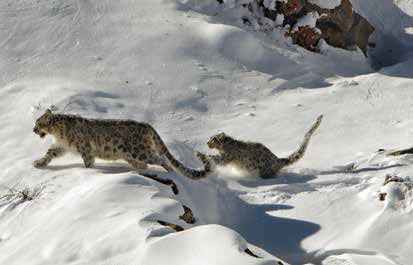
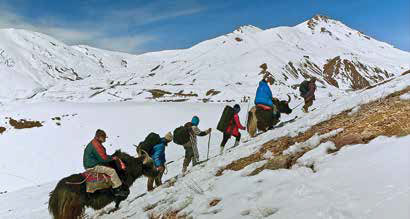

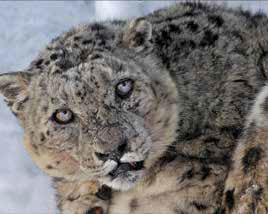
It was heart-breaking for the two film makers and their team to see the once majestic ruler of these mountains in such a sorry state. Also, a new arrival was sighted in the area – a fit, mature male with a yellowish coat. The Bedi Brothers named him Namka. He slowly began to intrude into Karma’s territory.
The life of these high-altitude predators is dangerous. To ambush and subdue a powerful wild goat, equally skilled at climbing these crumbling cliffs, is no easy task. In a rare sequence of stills, Namka misjudges his attack on an ibex perched on a cliff edge and they both fall about 100 metres onto a steep snow slope below. He was lucky to survive and even made his kill.
Six-year-old Namka claimed Karma’s territory as the mating season approached. Following her calls, he finds Pema halfway down a cliff. Both exchange warning snarls before their aggression subsides. The pair remain together for a few days and mate repeatedly. A new generation will be born to help ensure the survival of a handful of snow leopards in the little-known, awe-inspiring mountains around the Spiti Valley.
Woven through the snow leopard narrative are the adventures, frustrations and eventual success of the Bedi Brothers and their team of local trackers. Sub-zero temperatures and long periods of inactivity severely test the patience of the filmmakers. The depth of coverage of several individual snow leopards’ lives over five years makes these films unique. Also included are rare behavioural sequences of Himalayan ibex, blue sheep, red fox, golden eagle, Himalayan griffon vulture and snowcock.
The snow leopard’s survival in India can be attributed to the Buddhist beliefs of the local people, which teach that all life is sacred. The faith and traditions of the local communities have helped protect this remote wilderness. The growing success of ecotourism, centred on the snow leopard, is helping the local people to value an animal that sometimes kills their livestock.
Over the last few years, Spiti has emerged as a centre for snow leopard tourism. But, it must be carefully monitored and regulated to avoid any disturbance to this small and vulnerable breeding population.
The local communities now recognise the benefits of ecotourism. It offers work and a much-needed boost to the local economy. The villagers have learnt to live with the snow leopards, which are now seen as an asset to be protected and celebrated.
ABOUT
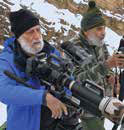 Naresh and Rajesh Bedi have been in the forefront of wildlife photography for over four decades. They have worked extensively with international organizations such as National Geographic. They have authored several books, been part of many an initiative for conservation and protection of the environment.
Naresh and Rajesh Bedi have been in the forefront of wildlife photography for over four decades. They have worked extensively with international organizations such as National Geographic. They have authored several books, been part of many an initiative for conservation and protection of the environment.

